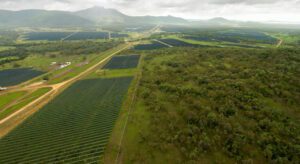The NSW government is to rush through a series of bills next month that it hopes will remove the anticipated bottle-necks and lower charges as nearly 140,000 households in the state seek new metering arrangements following the end of the solar bonus tariff.
The bills are being prepared in response to industry concerns about the potential train crash – highlighted in a report on Tuesday by RenewEconomy – that could cause lengthy delays, the loss in earnings from rooftop solar, and hefty bills of around $700 for the meter changes.
Chief among the amendments proposed by NSW is to lift the restrictions on who is qualified to change meters, Currently, only about 1,800 “level 2” electricians in the state are authorised to do the job – and these would be incapable of replacing even 50,000 meters in a year, let alone the 140,000 needed.
NSW proposes to follow the Victorian example and allow other electricians to be trained to perform the task. The process will also be supervised by the office of fair trading, meaning that the bill for labour will be around $25-$30, rather than the $300-$350 anticipated in the previous arrangements.
The second big change is to put the meter changes in the hands of the retailers. This is a major victory for the retailers, who want to not only seize the responsibility from network operators – their big rivals in a decentralised energy world – but also because it allows them to offer varying tariffs, including time of use offerings.
Meters may still cost around $300-$400, but the retailers are likely to make offers of free meters in turn for signing on customers to longer contracts, seeking to avoid the massive churn that has hit the industry.
However, it is not clear how customers will react to the offer of smart meters, or whether they will chose alternatives, and how they can access them. Many will look to install battery storage, with the Energy Storage Council predicting that 60,000 households could go this route in the first year. But what sort of deal will they get?
It is also yet to be seen what the retailers do in terms of feed in tariffs. In NSW, there is no compulsory feed in tariff, although most retailers offer between 5c/kWh to 8c/kWh for exports back to the grid. This compares to the 60c/kWh, plus a retail bonus, that was paid for all the output for many beneficiaries of the solar bonus scheme.
The timing of the new meters will be critical for consumers. Smart meters will allow them to make a seamless change from “gross metering” (the 60c/kWh solar bonus tariff) to “net metering” (the 5c-8c/kWh tariff), on the night of December 31, 2016.
Any delay to changes may mean that the household will get little money for the entire output of their rooftop arrays, and will not be able to “self consumer” that output and offset the cost of grid-sourced electricity. That could cost hundreds of dollars to each household.
NSW only sought feedback from its proposal from the industry last Friday, but appears determined to push through the bill changes, government sources told RenewEconomy in response to our article of Tuesday.
A NSW government document said previous regulatory arrangements were “creating a barrier to retailers and consumers who wish to adopt new technologies and new approaches to the way they obtain and use electricity.”
According to the document, of the 146,000 NSW households on the solar bonus scheme (mostly on 60c/kWh, but some on 20c/kWh), around 130,000 were using gross meters and need these to be changed.








